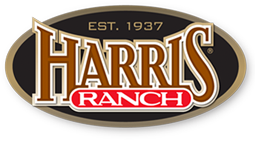Related Research Articles

Sterling County is a county located on the Edwards Plateau in the U.S. state of Texas. As of the 2020 census, its population was 1,372, making it the ninth-least populous county in Texas. Its county seat is Sterling City. The county is named for W. S. Sterling, an early settler in the area. Sterling County was one of 30 prohibition, or entirely dry, counties in the state of Texas, but is now a moist county.

A feedlot or feed yard is a type of animal feeding operation (AFO) which is used in intensive animal farming, notably beef cattle, but also swine, horses, sheep, turkeys, chickens or ducks, prior to slaughter. Large beef feedlots are called concentrated animal feeding operations (CAFO) in the United States and intensive livestock operations (ILOs) or confined feeding operations (CFO) in Canada. They may contain thousands of animals in an array of pens.

There are different systems of feeding cattle in animal husbandry. For pastured animals, grass is usually the forage that composes the majority of their diet. Cattle reared in feedlots are fed hay supplemented with grain, soy and other ingredients to increase the energy density of the feed. The debate is whether cattle should be raised on fodder primarily composed of grass or a concentrate. The issue is complicated by the political interests and confusion between labels such as "free range", "organic", or "natural". Cattle raised on a primarily foraged diet are termed grass-fed or pasture-raised; for example meat or milk may be called grass-fed beef or pasture-raised dairy. The term "pasture-raised" can lead to confusion with the term "free range", which does not describe exactly what the animals eat.

Murray Grey is a breed of Australian polled beef cattle that was developed in the upper Murray River valley on the New South Wales-Victoria border.

Wakanui is a locality in the Ashburton District, New Zealand. The area is rural and close to the sea. Historically it is known as a grain-producing area. It holds New Zealand's largest feedlot, where Wakanui Beef is produced through intensive farming.

Beef cattle are cattle raised for meat production. The meat of mature or almost mature cattle is mostly known as beef. In beef production there are three main stages: cow-calf operations, backgrounding, and feedlot operations. The production cycle of the animals start at cow-calf operations; this operation is designed specifically to breed cows for their offspring. From here the calves are backgrounded for a feedlot. Animals grown specifically for the feedlot are known as feeder cattle, the goal of these animals is fattening. Animals not grown for a feedlot are typically female and are commonly known as replacement heifers. While the principal use of beef cattle is meat production, other uses include leather, and beef by-products used in candy, shampoo, cosmetics, insulin
Feedlot Alley is a nickname given to a 500 km² area northwest of Lethbridge, Alberta, Canada known for its intensive livestock operations. The area is home to over 2,300,000 cattle and 180,000 hogs. Lethbridge County reported 543,566 cattle and calves and 73,161 pigs on census day 2016. Feedlot Alley, located in south central Alberta, is also known for producing 60% of all Canadian beef.
Fog fever refers to cattle refeeding syndrome which is clinically named acute bovine pulmonary emphysema and edema (ABPEE) and bovine atypical interstitial pneumonia. This veterinary disease in adult cattle follows an abrupt move from feedlot to 'foggage pasture'. Clinical signs begin within 1 to 14 days and death may follow within 2 to 4 days. The condition can affect up to 50% of the herd, and around 30% of affected cattle may die as a result. This metabolic nutritional-respiratory disturbance has also been reported in other ruminants and on a wide variety of grasses, alfalfa, rape, kale, and turnip tops.
Organic beef is beef grown according to organic food principles.

Tallgrass Beef Company is a Kansas-based beef company that sells grass fed and grass finished beef. Tallgrass Beef became the first grass fed beef producer to sell steaks in Chicago in 2005 when Harry Caray’s Restaurant began selling Tallgrass Beef. Its beef is sold via restaurants and grocery stores throughout the Midwest, East Coast, and Southeast, in addition to mail order. Tallgrass Beef Company raises some of its cattle on founder Bill Kurtis's Sedan, Kansas ranch. Tallgrass also has a network of family farmers and ranchers who raise and finish grass fed cattle that fit the standards of the Tallgrass protocols.

Harris Ranch, or the Harris Cattle Ranch, feedlot is California's largest beef producer, producing 150 million pounds (68 kt) of beef per year in 2010. It is located alongside Interstate 5 at its intersection with State Route 198 east of Coalinga, in the San Joaquin Valley of central California. The ranch is owned by Harris Farms.

Feeder cattle, in some countries or regions called store cattle, are young cattle mature enough either to undergo backgrounding or to be fattened in preparation for slaughter. They may be steers or heifers. The term often implicitly reflects an intent to sell to other owners for fattening (finishing). Backgrounding occurs at backgrounding operations, and fattening occurs at a feedlot. Feeder calves are less than 1 year old; feeder yearlings are between 1 and 2 years old. Both types are often produced in a cow-calf operation. After attaining a desirable weight, feeder cattle become finished cattle that are sold to a packer. Packers slaughter the cattle and sell the meat in carcass boxed form.
Fed cattle refers to cattle leaving a cattle feedlot, after fattening on a concentrated ration, that are ready to be sold to a packing plant for slaughter. Beef cattle are typically sold to packers at about 1,100 pounds, which yields a carcass weight of about 660 pounds.

Meet Your Meat is a 2002 documentary about factory farming created by People for the Ethical Treatment of Animals (PETA), narrated by Alec Baldwin, and directed by Bruce Friedrich and Cem Akin. The documentary explores the treatment of animals in modern animal agriculture. The film runs 12 minutes long.

Zilpaterol is a β2 adrenergic agonist. Under its trade name, Zilmax, it is used to increase the size of cattle and the efficiency of feeding them. Zilmax is produced by Intervet, a subsidiary of Merck & Co., and marketed as a "beef-improvement technology". Zilpaterol is typically fed in the last three to six weeks of cattle's lives, with a brief period before death for withdrawal, which allows the drug to mostly leave the animal's tissues.

A cow calf operation is a method of raising beef cattle in which a permanent herd of cows is kept by a farmer or rancher to produce calves for later sale. Cow–calf operations are one of the key aspects of the beef industry in the United States and many other countries. In the British Isles, a cow–calf operation may be known as a single-suckler herd. The goal of a cow–calf operation is to produce young beef cattle, which are usually sold. A rancher who works within such a model is often called a "cow–calf operator" in the United States.

The North Australian Pastoral Company (NAPCO) is a large, privately owned, Australian cattle company which operates 13 cattle stations covering over 60,000 km2, managing about 200,000 cattle, in Queensland and the Northern Territory. It produces beef cattle which are grass fed and grain finished before sale to Australian meat processors who onsell beef to domestic and international customers.
Croppa Creek is a very small village and railway location in the Gwydir Shire, New South Wales, Australia. It was the site of a railway station on the Boggabilla branch between Moree and North Star from 1932 until 1976 and is still a seasonal loading point for freight trains carrying bulk grain. In the 2016 census, the area surrounding Croppa Creek had a population of 120.
Ruminal tympany, also known as bloat, is a disease of ruminant animals, characterized by an excessive volume of gas in the rumen. Ruminal tympany may be primary, known as frothy bloat, or secondary, known as free-gas bloat.

Lubabegron is a veterinary drug used to reduce ammonia emissions from animals and their waste. Ammonia emissions are a concern in agricultural production because of detrimental effects on the environment, human health, and animal health.
References
 This article incorporates public domain material from the Congressional Research Service document: Jasper Womach. "Report for Congress: Agriculture: A Glossary of Terms, Programs, and Laws, 2005 Edition" (PDF).
This article incorporates public domain material from the Congressional Research Service document: Jasper Womach. "Report for Congress: Agriculture: A Glossary of Terms, Programs, and Laws, 2005 Edition" (PDF).